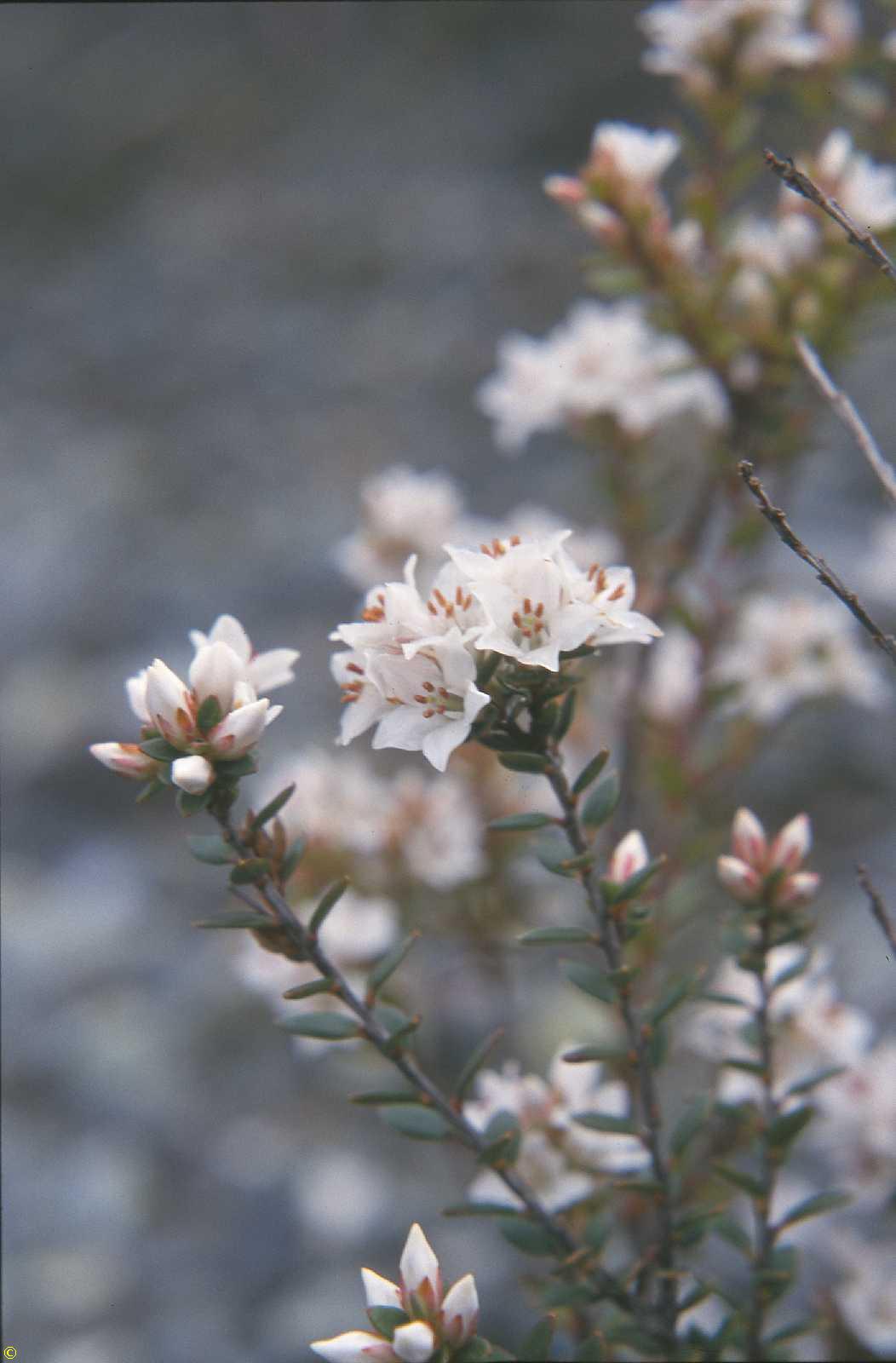Scientific Name: Epacris glabella Endemic Having a natural distribution confined to a particular geographic region
Common Name: smooth heath
Family Classification (Clade): Eudicots
Family: Ericaceae
Threatened Species Status: Endangered
Permit: It is an offence to collect, disturb, damage or destroy this species unless under permit.
Form Description: Open shrub with erect slender branches.
Height (m): 1 – 2
Flowers: White, solitary in the leaf axils and scattered along the upper parts of branches.
Fruit: Papery capsule
Municipality
Plant Communities
Habitat Notes
Heathy scrub on clay or serpentine.
Site Tolerance
Exposed, Moist, Windy
Soil Tolerance
Nutrient-poor, Poorly-drained
Propagation Calendar
-
Flowering Month
Jan Feb Mar Apr May Jun Jul Aug Sep Oct Nov Dec -
Seed Collecting Month
Jan Feb Mar Apr May Jun Jul Aug Sep Oct Nov Dec -
Sowing Month
Jan Feb Mar Apr May Jun Jul Aug Sep Oct Nov Dec -
Cutting Month
Jan Feb Mar Apr May Jun Jul Aug Sep Oct Nov Dec
Propagation Method
Seed Information
Seed Collection
Difficult to grow from seed. When the lower capsule on the stem has opened, the capsules higher on the stem are ready for collection.
Seed Treatment Method
Bog Method The seeds of many wetland species need to be kept wet to germinate. Punch a hole in the side of a recycled polyfoam box so that it holds water to the required depth. Sit the tubes in the box to germinate. Once germinated, punch holes in the bottom of the box to allow drainage.
Seed Treatment Notes
Smoke treatment has been found to significantly improve results for species with smaller seeds. Species with woody fruits and larger seeds are not responsive. Seed of some species exhibits a dormancy which is reportedly overcome by storage in a dark place for 3- 6 months. The bog method and older seed may improve results. If using bog method seed should be spread over surface of propagation mixture. If the medium is then kept constantly moist, germination should occur within 10-20 weeks.
Germination Time
10-20 weeks
Cutting & Division Information
Grown from tip cuttings, best taken in March and placed into individual tubes. This avoids problems in the growing on process due to the very fine root systems.
